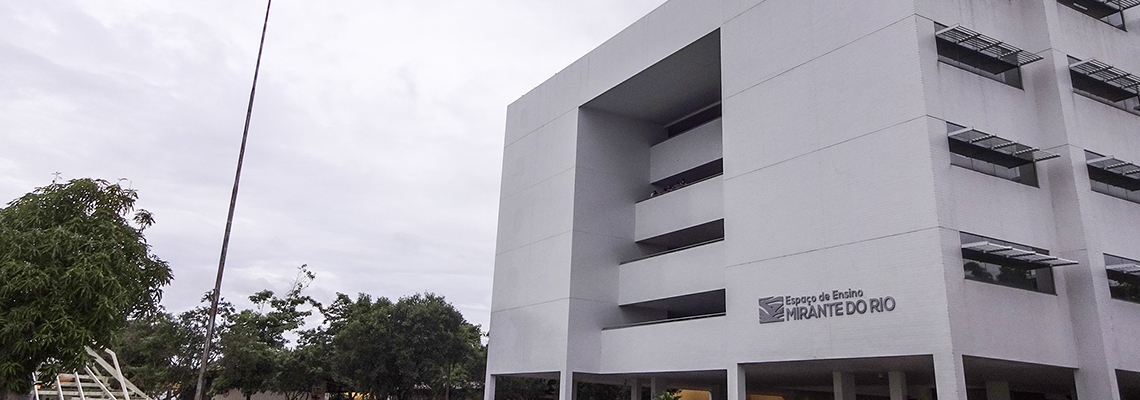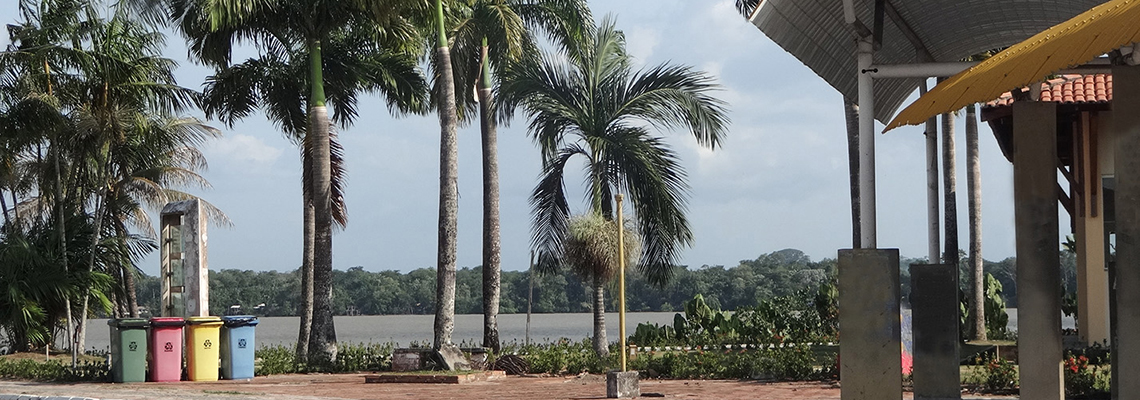Professional Master's
1. Mandatory Disciplines
Biostatistics (4 Credit Units, 60 Credit Hours)
Syllabus: Provide basic knowledge on Statistics, applying them to Clinical Analysis studies, enabling the student to have different ways of obtaining knowledge on the subjects covered, as well as starting him in the use of statistics to support academic research. Program Content: Unit 1 - Basic concepts; Basic definitions; Statistics divisions; Population and sample; Types of variables; Presentation and analysis of statistical data: tables and graphs; Central tendency measures: average, fashion, median; Dispersion measures: standard deviation, standard error, variance, coefficient of variation, basic notions of probability distribution; Normal distribution. Unit 2 - Statistical comparisons; Hypothesis Testing; Error types; Significance levels; Comparing two measures: proportions, means and medians; Parametric and non-parametric tests (including test, contingency tables). Unit 3 - Multiple comparisons; Correction of the analysis Analysis of Variance; One way; Two way; Homogeneity of variance; Nonparametric methods (Test H, Median, Friedman); Multiple comparisons of means (Tukey test, SNK test). Unit 4 - Dependencies between continuous variables; Mathematical functions; Dependencies between variables; Regression Analysis; Correlation. Linearization and transformation of variables; Screening test; Sensitivity and specificity.
Biochemistry (3 Credit Units, 45 Credit Hours)
Syllabus: Basis of basic and metabolic biochemistry; Biochemistry instrumentation; Pathophysiology and laboratory diagnosis of metabolic diseases; Quality control in clinical biochemistry; Validation methods of diagnostic kits in biochemistry.
Clinical and Laboratory Hematology (3 Credit Units, 45 Credit Hours)
Syllabus: Main exams in Hematology. Most common causes of CBC error. Differential diagnosis of anemia. Coagulopathies: clinical and laboratory correlation. Bone marrow tests.
2. Elective Disciplines
Application of Molecular Biology Techniques to Disease Diagnosis (3 Credit Units, 45 Credit Hours)
Syllabus: Theoretical: The discovery of DNA - DNA replication, mutation and repair - The genetic code - Transcription, translation. Recombinant DNA technology and its applications. Molecular Biology Techniques I - PCR, PCR-RFLP, qPCR, Sanger Sequencing. Diagnosis of genetic diseases. Diagnosis of infectious diseases
Practical: Genomic DNA extraction / PCR / PCR-RFLP quantification / Sequencing reaction. Electrophoresis (Agarose and acrylamide stained with silver nitrate), Sanger Sequencing, Sanger Sequencing Analysis, Fragment Analysis.
Bioethics in Research with Humans and Animals (2 Credit Units, 30 Credit Hours)
Syllabus: The course covers definition, history, principles of bioethics, animal welfare and scientific experimentation. The main objective of the course is to make the student aware of the ethical limits of experimentation so as not to disrespect animal welfare or to transgress humanitarian principles. Throughout the course, the ethical and legal requirements necessary for research with humans and animals are addressed. Videos, articles published in mass media and articles published in scientific journals are used to encourage discussions on the topics covered.
Diagnosis of Diseases Caused by Sexually Transmitted Infections (3 Credit Units, 45 Credit Hours)
Syllabus: Laboratory identification of sexually transmitted infections caused by bacteria, protozoa and viruses (Neisseria gonorrhoeae, Chlamydia trachomatis, Trichomonas vaginalis, Herpes sp, HPV, HTLV, HIV), using cytology, bacteriology, antigen and antibody research and molecular biology.
Laboratory Diagnosis of Human Zooneses (3 Credit Units, 45 Credit Hours)
Syllabus: Covers the analysis of the genesis of zoonotic infections. Communicable diseases, reservoirs and transmission mechanisms. Use of serological and microbiological reactions and basic aspects of molecular biology applied to zoonotic diseases. Emerging and re-emerging zoonoses. Preventive measures applicable to the control of zoonoses.
Laboratory Diagnosis of Bacterial Enteropathogens (3 Credit Units, 45 Credit Hours)
Syllabus: Ecology, epidemiology and laboratory diagnosis of emerging and reemerging species from the Enterobateriaceae, Vibrionaceae, Aeromonadaceae and Campylobacteriacea families; The concept of indicator microorganism for monitoring water quality and the main waterborne pathogens; Practical activities involving classical techniques used in the laboratory diagnosis of bacterial agents transmitted through water.
Laboratory Diagnosis of Metabolism Inborn Errors (2 Credit Units, 30 Credit Hours)
Syllabus: This course will address laboratory procedures involved in the diagnosis of inborn errors of metabolism (EIM) and in the implementation of quality control in laboratories of public institutions and linked to care in clinical genetics at SUS. The graduate student will be faced with the recognition of these laboratory practices and how they can be grouped in the SUS laboratory procedures table, strengthening the diagnosis of genetic diseases, such as EIM, in Brazil. The Collegiate Directorate of the National Health Surveillance Agency (ANVISA) implemented RDC No. 302 (10/13/2005) for the need to normalize the functioning of the Clinical Laboratory and Laboratory Collection Post and the relevance of the quality of laboratory tests to support effective diagnosis. In addition to this legislative issue, the graduate student will verify how the laboratory investigation of EIM goes through a series of facts that sometimes delay or hinder the diagnosis and monitoring of these diseases. Different technical protocols for the same analysis of a metabolite or enzymes, statistical treatment, insufficient sample number, instability of the physical-chemical properties of biological samples, temperature and storage time, limited infrastructure, climatic conditions, interference, can hinder the accuracy of the diagnosis laboratory.
Mycological Diagnosis (2 Credit Units, 30 Credit Hours)
Syllabus: Study of the general characteristics of fungi, the fungal cell, ways of reproduction and growth. Direct mycological diagnosis. Cultivation methods and identification of pathogenic fungi.
Molecular Diagnosis of Leukemias (2 Credit Units, 30 Credit Hours)
Syllabus: History of leukemia classifications; Classification of leukemias according to WHO; Cytomorphological and immunophenotypic diagnosis; Molecular markers used in the WHO classification; Minimal residual disease; Monitoring of BCR-ABL expression in chronic myeloid leukemia; New markers of gene expression for diagnosis and monitoring.
Molecular Diagnosis of Pathogens of Veterinary Interest and Zoonoses (3 Credit Units, 45 Credit Hours)
Syllabus: Molecular Biology studies the nature of the gene, indicating the structures and chemical differences between nucleic acids. In this sense, the detection of target genes, exclusive of veterinary infectious pathogens, with zoonotic potentials or not, has been widely used as a tool of high specificity and sensitivity for the diagnosis of diseases that affect animals and humans. In this way, the discipline covers theoretical and technical knowledge for performing the molecular diagnosis of infectious animal diseases, in addition to zoonones, which are of great impact on human health.
Molecular Diagnosis of Hereditary Diseases (3 Credit Units, 45 Credit Hours)
Syllabus: Understanding the pedigree; Classic and clinical laboratory methods and diagnosis of hetreditary diseases; Polymerase chain reaction, RFLP and SNPs with real-time PCR; Hemoglobinopathies as a model for the diagnosis of inherited diseases; Neonatal screening and the use of the HPLC method.
Serological Diagnosis of Infectious and Parasitic Diseases (3 Credit Units, 45 Credit Hours)
Syllabus: Study of the main methods of serological diagnosis of the main infectious and parasitic diseases; General aspects of serology; Serological conversion; Specificity, sensitivity, positive predictive value, negative predictive value; Fundamentals and principles of the main serological tests; Serological diagnosis of the main viruses; Bacterial serological diagnosis; Fungal serological diagnosis; Serological diagnosis of parasitosis.
CBC (2 Credit Units, 30 Credit Hours)
Syllabus: Erythrogram: direct determinations and derived parameters; General interpretation and erythroid changes; Leukogram: leukocyte count and leukocyte formula; General interpretation. Plaquetogram: parameters and general interpretation; Reference values. CBC at the extremes of age (newborns, up to 24 months and the elderly); CBC during pregnancy.
Immunology Applied to Laboratory Diagnosis (2 Credit Units, 30 Credit Hours)
Syllabus: Understanding immunological assays 'in vitro'; Obtaining recombinant antigens; Production of monoclonal antibodies; Immunoassays for antibody detection; Immunoassays for antigen research; Fundamentals of cytometry and applications.
Veterinary Immunovirology (2 Credit Units, 30 Credit Hours)
Syllabus: Biosafety in handling viruses of veterinary interest. Sample collection techniques for the characterization of the main viral agents that cause disease in animals. Classification of viruses of veterinary interest. Study of the morphological, serological and molecular characteristics of viruses. Establishment of relationships between viruses and the respective infectious diseases caused by them. Diagnostic techniques for the main viral agents of interest in veterinary medicine. Explanation of the mechanisms of the immune response to viruses of veterinary interest.
Medicines that interfere with blood homeostasis (2 Credit Units, 30 Credit Hours)
Syllabus: Understand the factors related to the use of drugs, especially in conical diseases such as diabetes, hypertension, osteoporosis, chemotherapeutic coagulopathies that alter the functioning and replacement of blood cells, leading to changes in blood homeostasis.
Research Methodology and Scientific Writing (3 Credit Units, 45 Credit Hours)
Syllabus: The Scientific Method guides the planning and execution of knowledge acquisition processes, involving the initial stages of formulating research questions, defining hypotheses and outlining the research and ways to test the hypotheses. It represents the beginning of the process, which should culminate in the publication of the results. In this context, scientific writing is presented as fundamental in the finalization of the process.
Molecular Methods in Viral Diagnosis (2 Credit Units, 30 Credit Hours)
Syllabus: Viral genomes; Access to nucleotide sequence banks; Construction of primers and probes; PCR reaction; DNA-PCR; RNA-PCR; Discrimination of viral subtypes and species; Molecular method validation for diagnosis.
Microscopy - Theoretical and Practical Aspects (2 Credit Units, 30 Credit Hours)
Syllabus: The main theoretical and practical aspects related to the use of optical microscopy in microbiology will be addressed. The main characteristics of dark field, bright field, phase contrast, interferential contrast, fluorescence and confocal microscopy will be highlighted. The discipline is eminently practical, and students are encouraged to bring their samples to practical classes, thus developing a critical spirit and the ability to select the best technique to be applied in examining their samples.
Morphology and Biology of Helminths of Medical and Veterinary Interest (3 Credit Units, 45 Credit Hours)
Syllabus: This course aims to establish knowledge of helminth parasitism in the context of the host-parasite relationship, aiming at understanding the mechanisms of infection, the pathogenic actions caused by the parasitism, the immune reactions of the hosts and the escape mechanisms used by the helminths , in addition to the role of parasitism in relation to co-infections.
Technical Standardization for the Operation of Clinical Analysis Laboratory (3 Credit Units, 45 Credit Hours)
Syllabus: Technical standard, Ordinance CVS-13 of November 4, 2005. Technical regulation for the operation of clinical laboratories. Goals. Coverage. Definitions. Operational processes. Quality assurance and control.
Human Clinical Parasitology (3 Credit Units, 45 Credit Hours)
Syllabus: The main objectives of the course are to update knowledge about the different parasites with an interest in human clinic, highlighting their relative importance, the different degrees of risk and their danger. At the same time, it aims to familiarize students with the laboratory diagnosis of different parasitic diseases, in their theoretical and practical aspects, with emphasis on the morphological aspects associated with the parasitic elements.
Topics of Drug Interferences in Laboratory Tests (3 Credit Units, 45 Credit Hours)
Syllabus: To present the main drug interactions resulting from the effects of the drug and its metabolites, both physiological - in vivo - and analytical in vitro, which can significantly interfere with laboratory results and, consequently, the diagnostic misconduct. 1-Introduction: Interference processes in laboratory tests, 2- Drug interference in liver profile exams, 3-Drug interference in lipid profile exams, 4-Drug interference in glycid profile exams, 5-Drug interference in thyroid profile exams , 6-Interference with medications in the electrolyte-ion system, 7-Interference with medicinal plants and herbal medicines in laboratory tests - general considerations.
Special Topics in Biosafety (2 Credit Units, 30 Credit Hours)
Syllabus: The subject addresses the study of Biosafety, which is a relatively new area of knowledge, and its applications in the field of laboratory diagnosis. Aiming to raise the awareness of the professionals involved with the laboratory diagnosis about the importance of implementing measures aimed at preventing, controlling, minimizing or eliminating the risks inherent in their activities, in order to avoid accidents at work and preserve the health of all those involved, the community and the environment, topics on Biosafety Concepts, Levels of Biological Safety in Laboratories, Safety Equipment, Good Laboratory Techniques and Making Risk Maps will be discussed.
Special Topics in Veterinary Clinical Pathology (4 Credit Units, 60 Credit Hours)
Syllabus: The course deals with the detailed study of the erythrogram, white blood cell and platelet count with emphasis on the new hematological indices generated by the automation of the blood count (RDW, PDW, MPV and PCT) and its applications in the veterinary. Topics on, biosafety, quality control and the importance of the pre-analytical, analytical and post-analytical phases in the results of laboratory tests are discussed. Throughout the course, topics on laboratory diagnosis of systemic changes are addressed using functional tests, highlighting the study of new biomarkers used to assess liver, renal, cardiac functions and acute phase proteins and their applications in veterinary medicine.
Virology (2 Credit Units, 30 Credit Hours)
Syllabus: Selected topics about the viral characteristics of agents of human importance punctuating biology, replication, epidemiology and diagnosis; Relevance of the chemical composition of viral agents for the construction of immunobiologicals for the diagnosis of viral agents; prevention and control of selected viruses; Discussion of specific articles within the topics presented.








